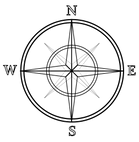The Most Influential
People in History

Zhu Shijie (Pinyin); Chu Shih-chieh (Wade-Giles)/joo shee-jee
fl. 1280–1303
Chinese Mathematician
Mathematics Ranking 26th of 46

‘Pascal’ Triangle from Zhu Shijie’s work Precious Mirror of the Four Elements, published in 1303. Liberian stamp.
Zhu Shijie was the last and greatest of the Sung dynasty (960–1279) mathematicians. The 1200s marked the high point of Chinese mathematics.(1) “With Chu Shih-Chieh the high-water mark of Chinese algebra is reached.”(2)
Bio
Unfortunately, we know little about him—not even when he was born or when he died. He lived near modern Beijing, but he seems to have spent some twenty years as a wandering scholar who earned his living by teaching mathematics. He did write two treatises in algebra.
Mathematics–Algebra, including Pascal’s Triangle
The first, written in 1299, was the Suan Hsueh Chhi Meng (Introduction to Mathematical Studies). This relatively elementary work is a general introduction to algebra. It contains nothing that was not in the work of Zhu’s predecessors, but it exercised a great influence on the development of mathematics in Japan and Korea.(3) It was lost in China until a Korean reprint of 1660 was discovered in 1839.
His second book is the Ssu Yuan Yu Chien (Precious Mirror of the Four Elements) of 1303. In the eighteenth century, this book disappeared in China, only to be rediscovered in the next century. The four elements, called heaven, earth, man, and matter, are the representations of four unknown quantities in the same equation. “The book marks the peak in the development of Chinese algebra, for it deals with simultaneous equations and with equations of degrees as high as fourteen.”(4)
Zhu Shijie’s work opens with a diagram identical to that which later on in the West came to be known as Pascal’s triangle (see full explanation under Pascal). In Europe, it first appeared in print in a book of Peter Apianus in 1527 but was most fully investigated in Pascal’s Treatise on the Arithmetical Triangle of 1654. However, Zhu’s book entitles it, “Diagram of the Old Method for finding Eighth and Lower Powers,” suggesting that it was known at least for some time.(5) Therefore, the array now known as “Pascal’s triangle” was known in China at least 350 years before Pascal and probably earlier.
None of the mathematicians of the Ming Dynasty (1368–1644) was a master of the Sung (960–1279) and Yuan/Mongol (1280–1368) dynasty algebra. It fell completely out of use and was not revived until long after the introduction of algebra from Europe by the Jesuits and others in the 1600s. Then, men such as Mei Ku-Chheng recognized medieval Chinese algebra under its cloak of unfamiliar notation, and reinvestigated it.(6)
Footnotes:
(1) Carl B. Boyer, A History of Mathematics, 2nd Edition (New York, 1991), p. 203.
(2) Joseph Needham, Science and Civilization in China, Volume 3 – Mathematics and the Sciences of the Heavens and the Earth (Cambridge, 1959), p. 46.
(3) Boyer, p. 203.
(4) Ibid, p. 203-204.
(5) Needham, p. 47.
(6) Ibid., p. 51 (from “None of the”)
1